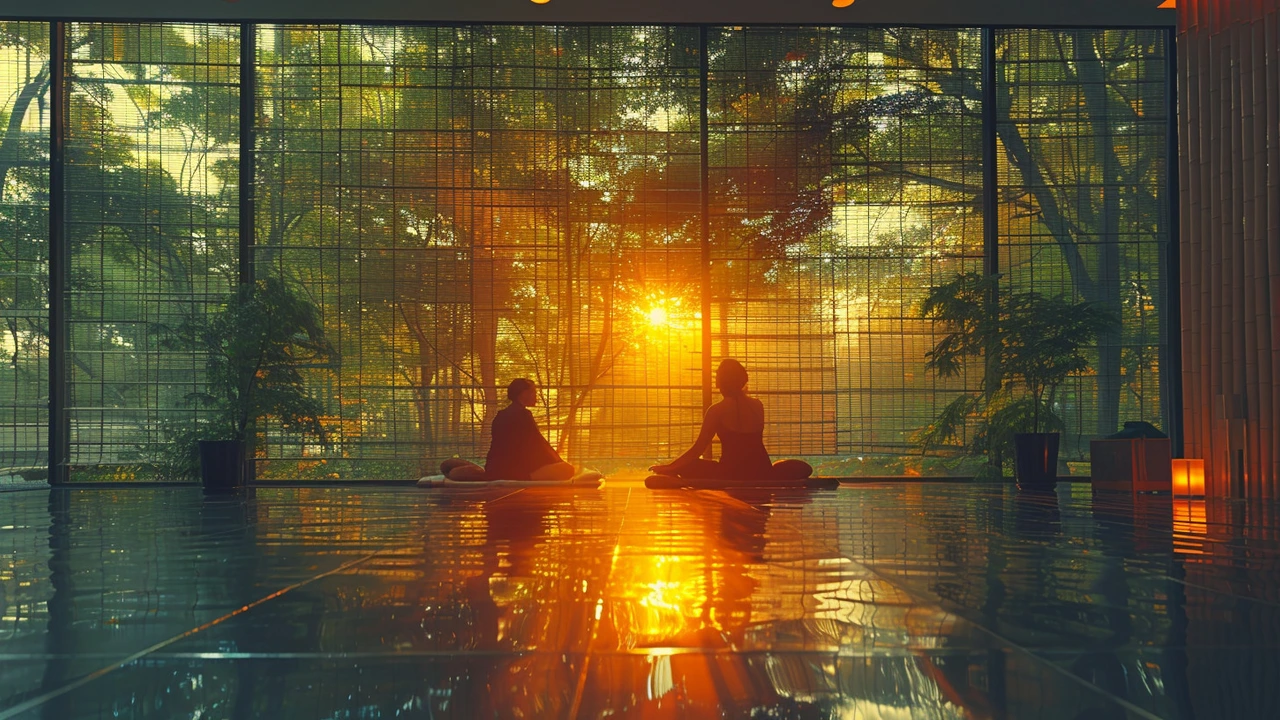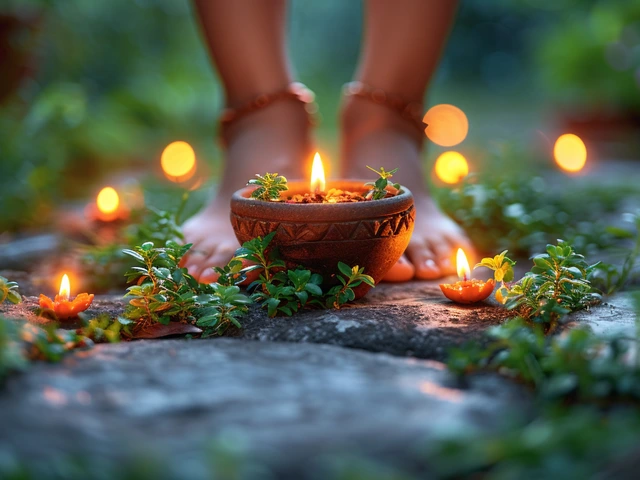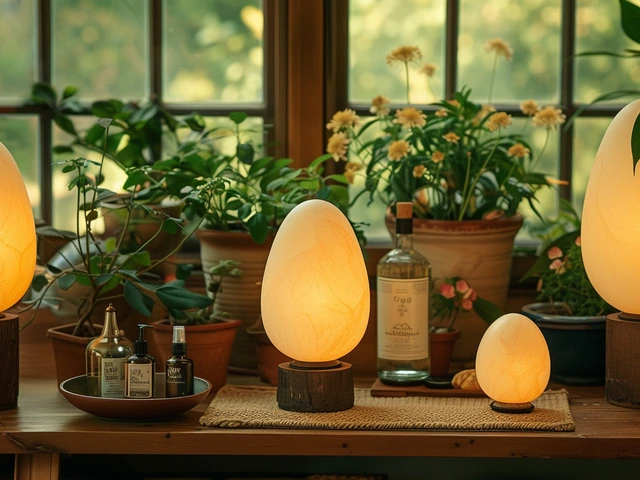
Imagine a therapy that doesn't just soothe your muscles but also harmonizes your body's energy. That's Shiatsu massage for you, a technique steeped in centuries-old tradition, yet perfectly suited to the modern lifestyle. This form of massage not only aims to relieve stress and tension but also seeks to restore balance within the body, promoting both physical and mental wellness.
Embarking on a Shiatsu journey is like tuning a musical instrument. The right pressure and rhythm can harmonize the body's energies, potentially leading to improved health and vitality. This guide will navigate you through the serene waters of Shiatsu massage, helping you understand its profound benefits.
- Introduction to Shiatsu
- Core Principles of Shiatsu
- Health Benefits
- Practical Techniques
- Common Misconceptions
- How to Prepare for a Shiatsu Session
Introduction to Shiatsu
Shiatsu, a holistic therapy developed in Japan over a century ago, merges traditional Chinese medicine principles with Japanese massage techniques. Unlike more familiar Western massage, which tends to focus solely on relaxation and muscle tension, Shiatsu addresses both physical and energetic imbalances, offering a more well-rounded approach to health and wellness. This technique is grounded on the belief that health issues stem from imbalances in our vital energy, or 'ki', which flows through pathways in the body known as meridians.
By applying pressure using fingers, thumbs, and even elbows, the Shiatsu practitioner's deliberate movements aim to restore this energy flow. Each session typically takes place on a low mat, allowing practitioners to leverage their body weight to facilitate deeper pressure. It's not just about pressing hard, though. The proper technique requires sensitivity to detect the energy levels and find the precise points that need attention.
One of the unique aspects of Shiatsu is that it is performed fully clothed. This approach allows for a different kind of touch and accessibility, making it suitable for people who are uncomfortable disrobing or who prefer not to use oils. Integral to the practice is the relationship between practitioner and patient, with the former taking a read on the latter's body condition and energy levels, providing a tailored experience that adjusts pressure and focus areas accordingly.
The therapy's holistic approach has garnered recognition and popularity outside Japan, spreading to the West in the late 20th century. Today, it's celebrated not only for its effectiveness in relieving physical ailments like back pain and headaches but also for its potential to reduce stress and anxiety. It's commonly used alongside other treatment methods, harmoniously integrating into broader therapeutic practices.
Anecdotal evidence from longstanding practitioners often highlights dramatic improvements in chronic conditions and emotional well-being after regular Shiatsu sessions. While it's important to approach such accounts with a critical mind, the consistently positive feedback underscores the potential benefits of this fascinating therapeutic practice.
Core Principles of Shiatsu
Shiatsu, which literally means 'finger pressure' in Japanese, operates on principles that are deeply rooted in traditional Chinese medicine, yet refined under the influence of Japan's cultural and medical advancements. The core of Shiatsu is based on the balancing and manipulation of qi, or life force, which flows through pathways in the body known as meridians. Practitioners of Shiatsu use their fingers, thumbs, and palms to apply pressure to various points along these meridians, thereby promoting health through the body's natural healing power.
This massage technique is not only about applying pressure; it's a dialogue between the practitioner and the patient's body. Each touch is a communication, meant to detect disruptions and imbalances in the flow of qi. Rehabilitation occurs as the body responds to the rhythmic pressure and adjusts its energy flow, improving overall vitality and wellness. For many, this method serves as a preventive measure, maintaining the body in a state of balance to ward off illness before it manifests.
Shiatsu's approach to health is holistic. This means it considers the body as an interconnected system rather than isolated parts. The therapy addresses emotional, psychological, and physical aspects, revealing its comprehensive nature. This perspective is encapsulated in the five elements theory — wood, fire, earth, metal, and water — each element corresponding to different aspects of physical and emotional well-being.
Balance and harmony are keywords in the lexicon of Shiatsu. The practice is not aggressive but rather gentle and nurturing, aiming to restore balance gently and progressively. The effectiveness of this method lies in its ability to adapt to the unique conditions of each individual's body, making personalized adjustments that resonate deeply within the body's internal state.
It's fascinating to note that beyond the physical interaction, Shiatsu practitioners must develop a keen sensitivity to the non-tangible aspects of the body’s responses. This sensitivity allows them to be highly responsive to the slightest changes in the patient's body, ensuring that the treatment is both appropriate and beneficial.
Health Benefits of Shiatsu Massage
When you first think about massage, relaxation and pampering often come to mind. However, Shiatsu massage offers more than just a moment of peace; it brings a multitude of health benefits that can transform daily living. Rooted in traditional Chinese medicine, Shiatsu works on the belief that certain points on the body are connected to energy pathways, or meridians, which can get blocked and cause health issues. Applying pressure to these points helps to clear these blockages, thereby promoting health and well-being.
The beauty of Shiatsu massage lies in its versatility. It has been cited as beneficial for a wide range of conditions and symptoms. For individuals suffering from chronic pain, such as backaches, headaches, and neck pain, Shiatsu can decrease discomfort significantly. It does this not by mere muscle manipulation, but by altering body energies and promoting self-healing. The relief from pain often leads to improved sleep quality, as a relaxed body is a prerequisite for sound, peaceful sleep.
Another noteworthy benefit of Shiatsu massage is its impact on mental health. Regular sessions have been shown to reduce symptoms associated with stress, anxiety, and even depression. By focusing on emotional release and relaxation, this therapy helps to calm an agitated mind, providing a mental break that can recharge your internal batteries. For individuals who juggle busy schedules and high responsibilities, this mental decompression can be dramatically beneficial.
Beyond the immediate relaxation and pain relief, practicing Shiatsu can lead to better overall circulation and reduced muscle stiffness. Increased blood flow enhances oxygen and nutrient delivery to tissues while assisting in detoxifying the body. Improvements in blood circulation can also lead to enhanced skin health, giving it a more vibrant and youthful appearance.
Interestingly, digestive health can also be improved through regular Shiatsu sessions. By applying technique along the abdominal area, it can help stimulate the intestinal function and improve overall digestion, alleviating symptoms such as bloating and constipation. For anyone seeking a holistic approach to maintaining body wellness, Shiatsu offers a compelling option.
Shiatsu isn't just for adults either; it can be customized for all ages, including children and the elderly, making it a family-friendly option for health care. Whether it's reducing asthma symptoms in younger patients or easing the joint pain of arthritis in older adults, Shiatsu adjusts its approach to meet various health needs across different life stages.
Practical Techniques
Delving into the hands-on application of Shiatsu massage reveals a tapestry of techniques designed not just to relax, but to therapeutically alter the body's internal dynamics. Shiatsu practitioners use their thumbs, palms, and even elbows to apply pressure to special areas of the body known as meridians or pressure points. This pressure, if applied correctly, can stimulate the flow of vital energy, or Qi, helping the body find its natural balance and heal itself. The beauty of Shiatsu is that each session is tailored to the individual's current health status, energy level, and overall treatment goals.
One commonly used technique involves a gentle, rhythlical pressure applied with the palms of the hands. Imagine this as a calming wave that slowly moves across different parts of the body, from the shoulders down to the feet. The rhythmic nature of this pressure touches deep tissues and muscles, inviting them to release any trapped energy and tension. Another technique uses the finger pads to apply circular pressures along the meridians, typically focusing on areas that correspond to internal organs.
Subtle Body Listening is another significant facet of Shiatsu. Here, the practitioner uses their hands to sense the flow of energy within the client's body, adapting their technique to encourage healing where it's most needed. This listening informs the practitioner not only where and how much pressure to apply but also when to give the body space to respond. It transforms Shiatsu massage from a mere technique into a deeply engaging, interactive healing communication between practitioner and client.
Technique Variation and Adaptation
Every Shiatsu session is as unique as the person receiving it. Variables like the recipient's body type, stress level, and even the day's weather might influence the techniques used. For instance, a more robust, energizing technique might be applied in the morning or during colder seasons to stimulate the body's heat and energy flow. Conversely, in the evening or warmer days, a gentler, more soothing approach might be preferred to help with relaxing and cooling down.
Adaptability is key in Shiatsu. Whether the session aims to energize or relax, the techniques are adjusted dynamically, maintaining a harmony with what the person's body and mind need at that moment. The goal is always to foster a deep sense of wellness and rejuvenation, making the person feel balanced, refreshed, and ready to face their daily challenges with renewed vitality.
Common Misconceptions
Shiatsu massage often falls victim to several myths and misconceptions that can obscure its true benefits and techniques. One common belief is that Shiatsu is merely a form of acupuncture without the needles. This couldn't be further from the truth. While both Shiatsu and acupuncture are rooted in the principles of traditional Chinese medicine and focus on the body's meridian points, Shiatsu involves manual pressure and techniques that are distinct. Unlike acupuncture, Shiatsu involves rhythmic pressures along the meridians as well as stretching and manipulating joints.
Another widespread misconception is that Shiatsu is inherently painful. This stems from the misunderstanding of the nature of pressure used in Shiatsu. It is crucial to note that while the pressure should be firm, it is also tailored to the receiver's body and should never cause pain. Instead, the pressure applied in Shiatsu aims to restore energy flow and can be described as deeply soothing and relaxing rather than painful.
Many also believe that Shiatsu can only be performed by someone with mystical knowledge of the body's energies. It’s true that practitioners undergo extensive training, particularly in understanding the energetic system of the body as defined in Eastern medicine. However, the practice is grounded in well-established techniques and principles which can be studied and mastered with proper education and practice. Therefore, the effective practice of Shiatsu is less about mysticism and more about skill and understanding of the body.
Lastly, there's the notion that Shiatsu is the same as any other massage therapy. This overlooks the unique approach of Shiatsu which is not only about relieving tension but also about balancing the body's energy to promote health and healing. Unlike some other forms of massage, Shiatsu is performed with the client fully clothed, typically involves more structured techniques, and is designed specifically to manipulate the energy flow across the body.
It's important to dispel these misconceptions in order to appreciate the real depth and effectiveness of Shiatsu. By understanding what Shiatsu genuinely offers, individuals can better decide if it's the right therapeutic approach for them, leading to greater satisfaction and potentially transformative results.
How to Prepare for a Shiatsu Session
Preparing for your first Shiatsu session can be a delightful anticipation. As you get ready to embrace this tradition-rich therapy, it’s important to consider several factors to maximize its benefits. Shiatsu, unlike some other therapies, invites a holistic preparation encompassing your physical, mental, and environmental readiness. This preparation ensures that you are not just physically present but also mentally attuned to receive the healing.
First, consider your physical preparation. It is advisable to wear loose, comfortable clothing made of natural fibers, as Shiatsu involves stretches and pressure being applied all over your body. Tight clothing can restrict movement and lessen the effectiveness of the techniques. Additionally, avoid eating heavy meals right before your session. A light, nutritive snack is sufficient to keep you energized without feeling overly full, ensuring that your body can focus on the healing process rather than digestion.
Mental preparation is equally crucial. Shiatsu is not only about physical relief but also about achieving a state of mental balance and calm. Spend some time before your session in meditation or simple quiet reflection to ease your mind. This makes you more receptive to the therapeutic effects of Shiatsu and enhances your ability to internalize its benefits. You should also communicate openly with your therapist about your expectations and any physical or emotional concerns you might have. This dialogue assists the therapist in tailoring the session to address your specific needs effectively.
Your environment can also affect the outcome of your Shiatsu session. If possible, choose a quiet, clean, and calming space for your massage. The ambiance of the room should be conducive to relaxation, with a comfortable temperature and minimal distractions. This setting helps you detach from the day’s worries and fully engage in the experience. It can also be helpful to turn off any disruptive electronics or devices that could disturb the peaceful atmosphere necessary for a successful session.
For those who are regular recipients of Shiatsu, consider keeping a journal of your sessions. This record can be enlightening, helping you trace your progress, understand patterns in your physical or emotional response, and provide valuable feedback to your therapist. Such proactive engagement shows your commitment to your health and enhances the continuity and effectiveness of your sessions.
Finally, approach your Shiatsu session with openness and without expectations. Each session can be a unique journey. Allowing the therapy to unfold naturally without preconceived notions can lead to more profound discoveries about your body and overall health. Remember, the goal of Shiatsu is to harmonize your body’s energies, so maintaining a flexible, open attitude is key to receiving the deepest benefits from your sessions.




